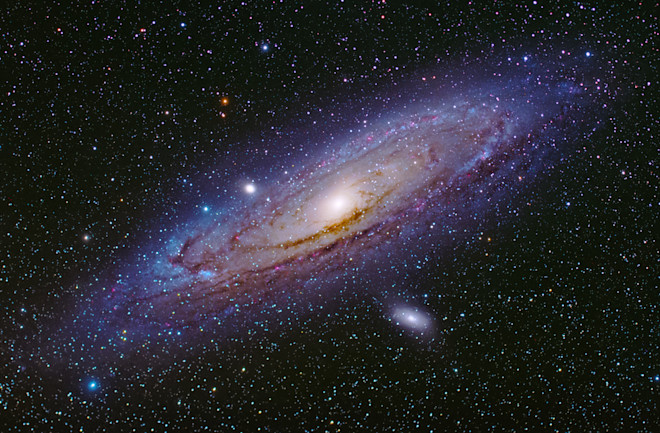The Paradox of Proximity: The Stellar Census of the Milky Way

The question of how many stars populate our cosmic abode, the Milky Way, appears deceptively simple yet eludes a definitive answer. Despite humanity’s profound understanding of the broader Universe—encompassing the composition of its matter and energy, the precise rate of cosmic expansion, the elapsed time since the primordial fireball of the Big Bang, and the sheer number of galaxies that dot the cosmic web—fundamental uncertainties persist regarding the very galaxy in which we reside. Our unique position within its vast structure does not grant us privileged insight; instead, it imposes formidable challenges in delineating the Milky Way’s intrinsic properties, a conundrum exacerbated by the inherent observational limitations of our vantage point.
The primary obstacle to obtaining a comprehensive image of our galaxy lies in the dense, light-obscuring veil of interstellar dust that pervades the galactic plane. This veil renders large swathes of the Milky Way’s distant regions frustratingly opaque, obscuring our view of stellar populations and galactic structure. While we possess relatively precise measurements of the galactic center’s distance, the mass and location of its supermassive black hole, and the existence of a prominent central bar and bulge, our understanding of the intricate spatial organization of its spiral arms, the distribution of stellar populations across the disk, and the overall morphology of our home galaxy remains replete with ambiguities.
Consequently, even the most elementary fact concerning the Milky Way’s stellar census—a seemingly rudimentary numerical determination—remains an open question, fraught with considerable uncertainty. Estimates of the Milky Way’s stellar population commonly hover around 200 billion stars, yet alternative assessments diverge widely, positing lower bounds as modest as 100 billion or upper limits that may approach 400 billion. Such stark discrepancies arise from the inherent difficulties of stellar enumeration across an obscured, vast, and structurally complex galactic disk.
Given the robust empirical foundation underpinning our knowledge of extragalactic phenomena, this glaring lacuna in our understanding of our own stellar metropolis serves as a testament to the epistemological constraints imposed by our observational limitations. This scientific humility—the acknowledgment of the extent of our ignorance—epitomizes the integrity of the scientific method, emphasizing the importance of rigor, skepticism, and methodological transparency in the face of persistent uncertainty.
A compelling analogy can be drawn between our predicament and the philosophical paradox of self-perception: akin to a world devoid of reflective surfaces, mirrors, or recording devices, wherein one is tasked with discerning the precise features of one’s own visage without recourse to external validation. Just as one might infer the appearance of their own eyes by observing those of others, our conceptualization of the Milky Way’s structure is largely informed by extrapolations from analogous spiral galaxies—galactic siblings strewn across the cosmos that exhibit comparable morphological and dynamical characteristics. For instance, the spiral galaxy UGC 12158 serves as a cosmic doppelgänger, mirroring the Milky Way in its extended spiral arms adorned with spurs, subdued star formation driven by density wave perturbations, modest central bar and bulge, and isolation from major gravitational interactions that could otherwise distort its structure.
Despite these limitations, the arsenal of observational techniques at our disposal furnishes us with invaluable perspectives on our galaxy’s anatomy. By transcending the optical spectrum and harnessing the full breadth of electromagnetic radiation—from radio and infrared to X-ray and gamma-ray wavelengths—we circumvent the obstructive influence of interstellar dust and unveil a multifaceted, albeit still incomplete, portrait of our celestial home. Each segment of the electromagnetic spectrum reveals distinct astrophysical processes at play, enabling us to peer through the obscuring veil and glean insights into the structure and composition of the galactic disk, the presence of stellar nurseries, and the energetic phenomena that permeate our galaxy. And yet, for all the advancements wrought by modern astrophysical methodologies, the exact stellar census of the Milky Way remains unresolved—a lingering enigma that underscores the paradox of proximity: our immediate surroundings, despite their accessibility, often elude our grasp far more than the distant galaxies whose splendor we observe with unparalleled clarity.
WORDS TO BE NOTED-
-
Relating to the universe or cosmos, especially as distinct from the Earth. -
All existing matter and space considered as a whole; the cosmos. -
A system of millions or billions of stars, together with gas and dust, held together by gravitational attraction. -
The galaxy in which our solar system is located, seen as a luminous band in the night sky. -
The plane in which the majority of a galaxy’s mass lies, typically the disk-shaped part of a spiral galaxy. -
Tiny solid particles found in the space between stars, which can obscure visible light. -
A black hole with a mass millions or billions of times that of the Sun, found at the center of most galaxies. -
Curving structures of stars and gas that extend from the center of spiral galaxies. -
A group of stars sharing similar characteristics, such as age or chemical composition. -
The study of the form and structure of objects, such as the shape and arrangement of galaxies. -
The process of counting and cataloging stars within a galaxy or region. -
Knowledge based on observation or experience rather than theory or pure logic. -
Limitations on what can be known due to the nature of knowledge and the methods of acquiring it. -
A form of energy that includes radio waves, microwaves, infrared, visible light, ultraviolet, X-rays, and gamma rays. -
The phenomenon whereby something nearby (like our own galaxy) is harder to study in detail than distant objects, due to observational limitations.
PARA SUMMARY-
The Milky Way, our home galaxy, remains surprisingly elusive to detailed study despite our advanced understanding of the broader universe. Although we can estimate cosmic expansion, the age of the universe, and the number of galaxies across the cosmos, determining the exact number of stars within our own galaxy is fraught with uncertainty. This is primarily due to our position within the Milky Way and the thick veil of interstellar dust that obscures vast regions, making accurate stellar counts difficult. Current estimates suggest between 100 and 400 billion stars, but such wide discrepancies highlight the challenges of observation from within. Our knowledge of galactic structure, spiral arms, and stellar distribution is largely inferred by comparing the Milky Way to other similar spiral galaxies, since direct observation is limited. Modern astronomical techniques—spanning the electromagnetic spectrum—help overcome some obstacles, yet the precise stellar census remains unresolved. This paradox underscores the limitations of our observational vantage point, emphasizing both the complexity of our galaxy and the humility required in scientific inquiry.
SOURCE- BIG THINK
WORDS COUNT- 600
F.K SCORE - 14.6



Comments
Post a Comment